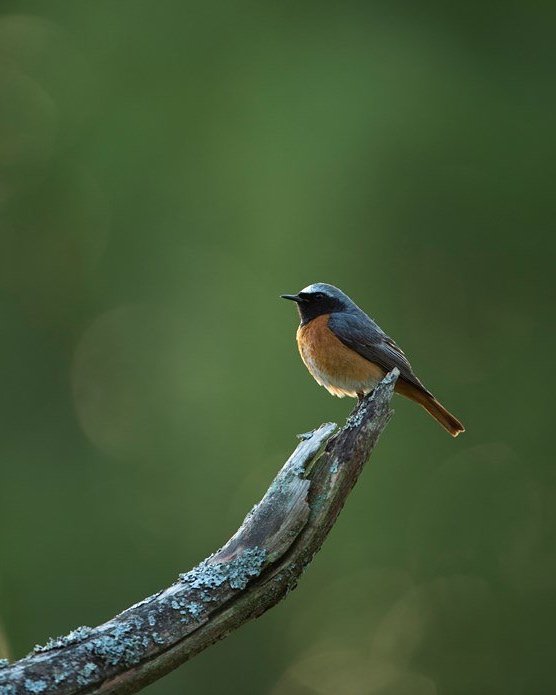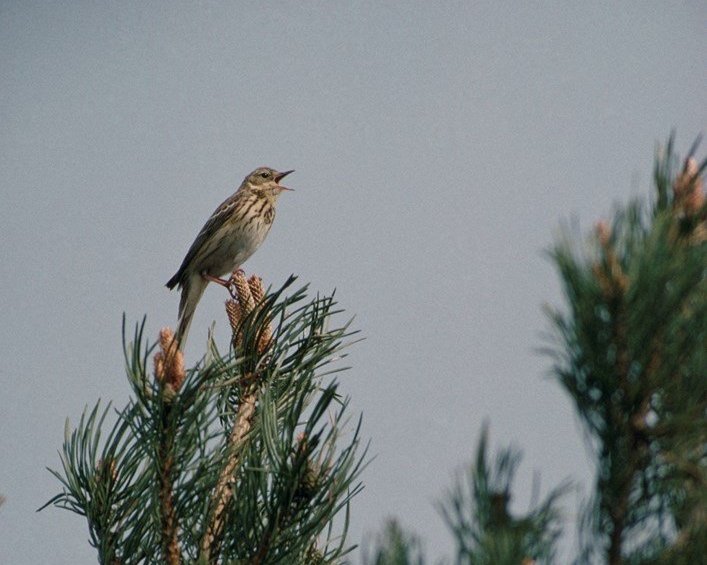The rainforest fab four
From the tiniest lichens, to otters and beavers, Scotland’s rainforest supports a rich array of wildlife. In fact, these are some of the most biodiverse habitats in the UK.
When it comes to birds, they’re full of all the woodland favourites like tawny owls, siskins and great tits. But Scotland’s rainforests are also home to four species of birds that are getting harder to see in woodlands further east.
These ‘fab four’ are all summer migrants, birds that travel to the UK from Africa each spring to nest in our woodlands, where they sing their hearts out.
Credit Ben Andrew
Wood warbler
There are several different species of warbler that visit the UK each summer. They’re all quite small (about the size of a robin) and have long, thin beaks for catching insects. Some also look very alike, with willow warblers and chiffchaffs being two of the hardest to tell apart.
Our rarest warbler is the wood warbler, and it might appear similar to willow warblers at first glance, though when you get a good look, they’re much more yellow. The thing that really tells them apart, however, is their fabulous song!
It starts with a ‘pee pee pee pee’ call which then becomes a ‘pip pip pip pip’ that gets faster and faster, before racing away at high speed. You’ll sometimes hear it referred to as a ‘spinning coin’ and it does have a whirring feel.
Wood warblers were once widespread, but they’ve been declining right across Europe since the 1980s. They’re now classed as a Red List bird of conservation concern, and their numbers are still declining.
Their stronghold in the UK is the oak woodlands of the western temperate rainforests, and if you want to hear that amazing song, that’s one of the best places to go.
Pied flycatcher
There’s no mistaking a pied flycatcher, or at least not the males, with their extremely distinctive black and white plumage. Females have more muted colours, which keeps them better camouflaged when they’re sitting on eggs or chicks in the nest.
Pied flycatchers eat… flies, or rather flying insects of various sorts. They do this by sitting on a branch watching, and then darting up into the air when something tempting flies past. They often collect big beakfulls at once to take back to the nest.
Like the wood warbler, their numbers have also gone down, and they’re also more restricted to the oak woodlands of our temperate rainforests.
The pied flycatcher song isn’t quite as distinctive as the wood warbler. It’s a little bit like the song of a dunnock, or the beginning of a blackcap song: a sharp, piercing slightly scratching warble with a wobble.
Redstart
All of the birds on this list can be hard to see, but redstarts are probably the hardest, because they’re very shy and secretive. The males do perform a lovely courtship display, however – if you’re lucky enough to see it – with wing and tail flicking while singing their short, beautiful song. Since they often have more than one brood, you might spot this through the summer, not just in the spring.
The males are really very handsome, with a bright orange chest and a black throat. Females look quite different and are more of a brown colour, but both males and females have a red tail from where the species gets its name. In fact, often all you’ll see of a redstart is a red tail flash as it flies away.
Young birds also have the red tail, and you might start to see them out and about later on in the summer. But watch out, as they’re really easy to confuse with young robins.
Redstarts prefer to nest in oak woodland, and although their stronghold is in the west, they can be found in suitable habitat across Scotland. In the autumn, you might see them almost anywhere on their journey back to Africa.
Credit Chris Gomersall
Tree pipit
There are several different types of pipit in the UK, the most common being the meadow pipit, which you can see on farmland and moors. We also have rock pipits, and water pipits, and they all look quite similar. But if you spot a pipit and you’re not sure what species it is, then look around: the habitat you see it in is often a dead giveaway.
Tree pipits are the only ones that you’re likely to see in woodland. They’re also another migrant bird that’s favouring our western woodlands, meaning that Scotland’s rainforest is one of the best places to see them.
Tree pipits have a song that sounds a bit like the very start of a chaffinch song, though it cuts off quite quickly. They often sing by flying up into the air and then ‘parachuting’ down into the top of a tree, or sometimes even a telegraph wire.
They have a reputation for being a bit dull and brown, but if you manage to get a good look at one, you’ll see they actually have quite an interesting, streaked plumage, with a little white bar on each wing.
Tree pipits are Red Listed birds, though they’re doing better in Scotland than they are in England and Wales.







